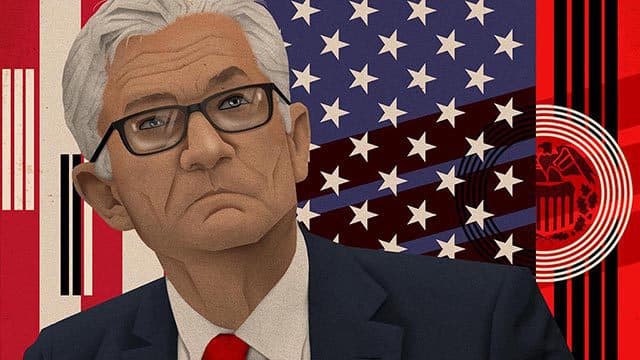Powell: I Have No Intention of Banning Stablecoins
A central bank digital currency would replace the functions of stablecoins, but he has no intention of banning digital assets, Powell said Thursday.

Jerome Powell, chair, Federal Reserve, Blockworks Exclusive Art by Axel Rangel
key takeaways
- Powell clarified a previous statement he made about digital assets, saying he does not intend to ban stablecoins
- A central bank digital currency would replace the functions of stablecoins, he reiterated
During testimony before the House Financial Services Committee Thursday, Federal Reserve Chairman Jerome Powell said that while a central bank digital currency (CBDC) could potentially replace stablecoins, he does not intend on banning the digital tokens.
Representative Ted Budd (R-NC) asked Powell to elaborate on a statement he made in July about cryptocurrencies during his last testimony before the Committee.
“You wouldn’t need stablecoins, you wouldn’t need cryptocurrencies if you had a digital US currency,” Powell said then.
“I immediately realized that I had misspoken,” the central bank head said on Thursday, referring to his previous comments. “Take the word ‘cryptocurrency’ out of that sentence.”
Stablecoins, Powell explained Thursday, currently play a role that a central bank digital currency could take on, if approved. It is “fairly widely accepted” that a central bank digital currency could perform many of the same functions, he said.
The digital tokens still need to be regulated, Powell stressed.
“I have no intention to ban them, but, stablecoins are like money market funds, they’re like bank deposits, but they’re, to some extent, outside the regulatory perimeter and it’s appropriate that they be regulated,” Powell said. “Same activity, same regulation.”
The comments come amid an interesting regulatory environment for digital assets as different regulatory bodies navigate jurisdiction over the new asset class.
Crypto markets mostly rose following Powell’s comments. Bitcoin and ether were each up more than 6% at time of publication.





